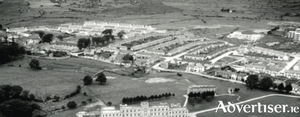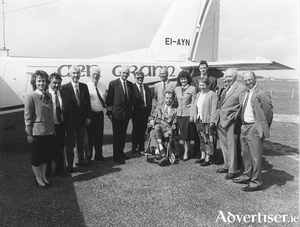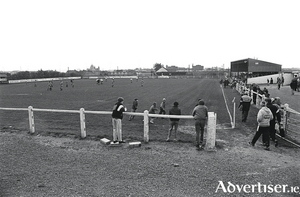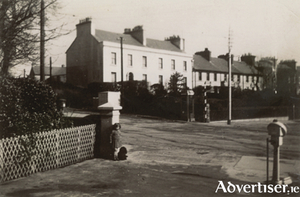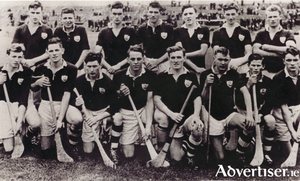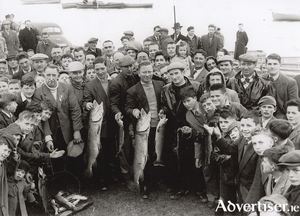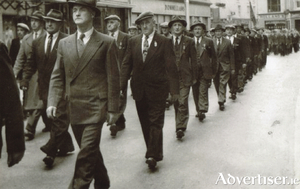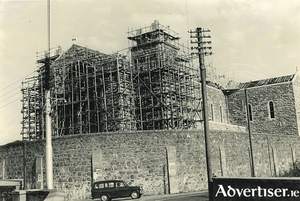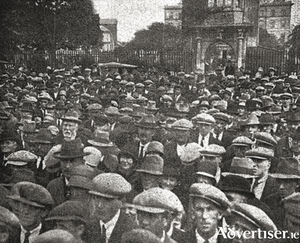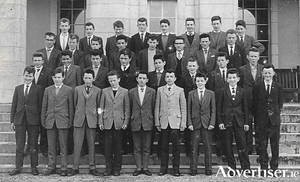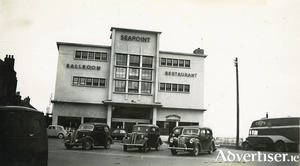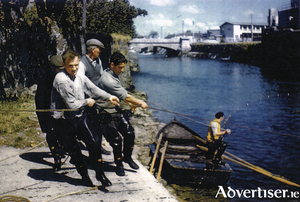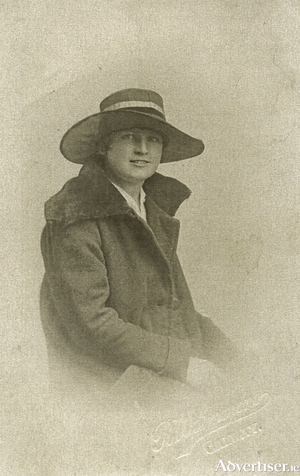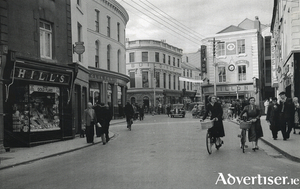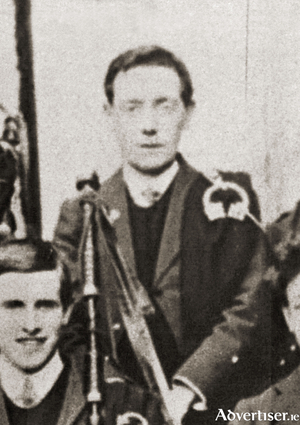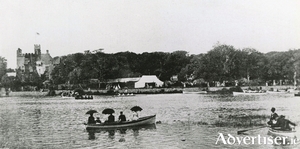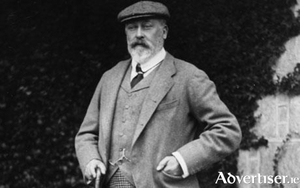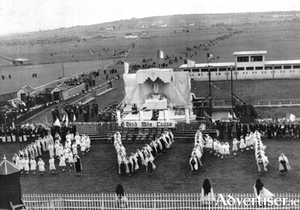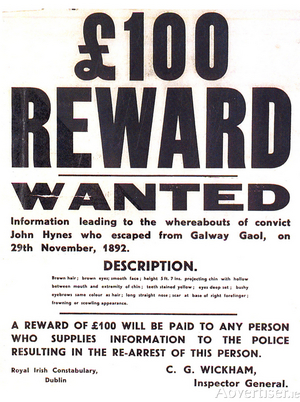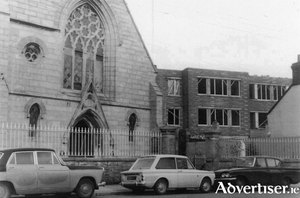Shantalla in 1953
Fri, Oct 02, 2015
Walter Macken’s first published English language play Mungo’s Mansion was about people in the tenements of Buttermilk Lane about to be rehoused away out in the country, in the wilds of Shantalla. This was causing great distress to the ‘townies’ who would have to move less than a mile as the crow flies.
Read more ...Aer Árainn, the early years
Thu, Sep 24, 2015
There was a ferry service to the Aran Islands in the 1960s, but the ship could only dock at Inis Mór. In 1969 Colie Hernon wrote a letter to The Irish Times complaining of the inadequate transport facilities to the islands, which prompted Hayden Lawford to conduct an aerial survey of Inis Mór. Meanwhile Ralph Langan, whose business was fruit wholesaling in Galway, and who had problems shipping fresh fruit to the islands, had also seen Colie’s letter.
Read more ...Terryland Park
Thu, Sep 17, 2015
In ancient times, Galway was known as Streamstown because the lower Galway River divided into many streams, thus creating a system of islands. The area was known as ‘Tír Oileáin’, the land of islands. Two place names survive from that period, Tirellan and Terryland.
Read more ...The Crescent from Murray’s shop
Thu, Sep 10, 2015
This photograph of The Crescent, which was originally known as Palmyra Crescent, was taken c1940. Palmyra in Syria is very much in the news these days, but I cannot think of any reason why someone would name a road in Galway after it.
Read more ...The agony and the ecstasy of Galway hurling
Thu, Sep 03, 2015
An elderly lady once told me that “Apart from the Irish language, we have nothing more Irish in this country than the game of hurling.” I agree. It is the greatest game of them all. It is probably the number one game in the county, attendances at senior county finals being a very good criterion — the hurling final has always been the bigger attraction than the football counterpart, “even in the balmy days of our football three-in-a-row,” according to the late Jack Mahon.
Read more ...Bráithreacht na Coiribe
Thu, Aug 27, 2015
When a small group of anglers who regularly fished the lower lake were arranging a function for themselves in 1953, they decided to form an angling association as well. The objectives of the association were the promotion of good fellowship among anglers, the fostering of improved angling conditions, and the maintenance of free fishing. They called themselves the Brotherhood of the Corrib, or Bráithreacht na Coiribe.
Read more ...Peter Greene, volunteer and mayor of Galway
Thu, Aug 20, 2015
Peter Greene was born in Galway city in 1895, the youngest child of Colman Greene from Carna and Julia McGrath from Newcastle. He was educated in the ‘Pres’ and the ‘Mon’, where his teacher Brother Ambrose was a major influence; “Boys, I hope none of you will ever wear the red coat.”
Read more ...Galway Cathedral
Thu, Aug 13, 2015
“Catholic cathedrals in Ireland are monuments to our imitative instincts and conservative distrust of artistic originality. There are examples of new church architecture but in general, Church authorities remained faithful to the Middle Ages and refused to abandon medieval architecture. It is therefore understandable that in 1949 when the building of Galway Cathedral was commissioned, it should have been conceived in a hybrid Romanesque style. In 1959, the foundation stone was laid and on August 15, 1965, the Cathedral of Our Lady Assumed into Heaven and St Nicholas was dedicated by Cardinal Cushing. In December that year the Vatican Council solemnly ended its revolutionary document The Constitution on the Sacred Liturgy which rendered the shape, style, arrangement, and setting of such buildings obsolete and anachronistic. This building was almost an object lesson in insularity. It is clear from the late Bishop of Galway’s instructions that for him art can be no more than decoration, an illustration of scripture or a clearly formulated theology. Art is never an original source, a spiritual revelation, a doing of theology.”
Read more ...A 1927 election rally
Thu, Aug 06, 2015
Our photograph was taken on June 5, 1927 from the platform of a Cumann na nGaedheal election rally in Eyre Square. The crowd (almost entirely male), “looked voters every one”. In the background you can see the Browne Doorway and the Railway Hotel.
Read more ...Coláiste Éinde, founded 1928
Thu, Jul 23, 2015
Coláiste Éinde was one of the institutions founded by the State shortly after attaining freedom. It initially suffered from ‘growing pains’. It started on October 23 1928 in Furbo House, and later moved to Dublin before eventually finding its home in Threadneedle Road. The building was constructed by Stewarts to house St Louis nuns attending UCG and also for a girls’ organisation.
Read more ...Seapoint Ballroom
Thu, Jul 16, 2015
Sixty six years ago tomorrow, on July 17 1949, Seapoint Ballroom was officially opened by Joe Costelloe, Mayor of Galway, at 10pm.
Read more ...The Galway Fishery
Thu, Jul 09, 2015
The first documented reference to the Galway Fishery is found in the Pipe Rolls, a collection of financial records maintained by the British Treasury. The Rolls of 1283 AD refer to the fishery at the time being part of the property of Walter De Burgo. The fishery passed through several ownerships until 1521 when Henry VIII granted a licence to Janet and Anthony Lynch to have three nets upon the river of Galway between the bridge and the sea and to build one water mill upon the river wherever they thought proper. In 1570 Elizabeth I granted the mayor, bailiffs, and commonality of the town and their successors “The customs of one salmon every Wednesday out of the Great Weir, a salmon every Saturday out of the High Weir, a salmon every Friday out of the ‘hale’ (haul) net and as many eels as shall be taken in one day out of twenty eel weirs.”
Read more ...Peg Broderick-Nicholson and the War Of Independence
Thu, Jul 02, 2015
Peg was born at 17 Prospect Hill of parents with a strong nationalist outlook. She went to school in ‘The Pres’, where after the 1916 Rising there was a pitched battle between the wearers of the red, white, and blue badges (common during World War I) and those wearing green, white, and gold badges. The green side won, but then all the badges were confiscated by Mother Brendan.
Read more ...Elegant streetscape
Thu, Jun 04, 2015
There is a lovely vintage quality about this photograph of the most elegant corner in Galway, which was taken about 1950 at almost 6.15 in the afternoon. It shows how the three corner buildings, all of which are slightly rounded, complement each other. It was always known as Moon’s Corner or Dillon’s corner, never McNamara’s corner.
Read more ...John Hosty, 1916 veteran
Thu, May 28, 2015
For John Hosty from Shantalla, the ‘physical force’ movement originated some time before 1910 with the publication of The United Irishman, a newspaper which kept a lot of young people from following ‘the constitutional movement’. When the 1913 Oireachtas was held in Galway, Seán McDermott used the occasion to swear in a number of young Galwegians to the IRB, and from then on they did all they could against the Irish Party, including distributing anti-enlisting literature at all hours of the night.
Read more ...May Sunday at Menlo
Thu, May 21, 2015
Maytime was traditionally considered a time for festivals, and Galway was no exception to this. In fact it used to be said that the citizens had an almost reverential attachment to the old custom of going out to Menlo for three Sundays in May to partake in the pleasure of the open air and the early summer sun. It was known as ‘Maying in Menlo’.
Read more ...Protecting Edward VII - A ‘friend of the Pope’, in Connemara 1903
Thu, May 21, 2015
Pleased with his friendly reception in Dublin in 1903, His Majesty King Edward VII determined to visit the wilds of Connemara and Kerry. Such a visit presented a number of problems for Dublin Castle, not least was security at a time when nationalism was rearing its head, and seldom lost an opportunity to express itself by demostrations and protests. I learn something of these concerns from a delightful book Memories: Wise and Otherwise. by The Rt Hon Sir Henry Robinson, Bart, KCB. (Published by Cassell and Co, London, 1923). Robinson was head of the Local Government Board in Ireland, and a man, who in the tradition of Somerville and Ross, saw humour in the Irish character, and indeed in the efforts of Britain to maintain control in Ireland.
Read more ...Father Patrick Peyton, the Rosary Priest
Thu, May 14, 2015
Patrick Peyton was born on January 9 1909 in Attymass, Co Mayo, one of nine children. When they were growing up, the rosary was central to their lives. His family were subsistence farmers and unable to afford to send him to a seminary, so for a number of years he worked on the farm to help them earn a living as his father was too ill. Then he and his brother emigrated to America. They eventually entered a seminary in Notre Dame to study for the priesthood, but their hopes of being ordained together seemed to be dashed when Patrick got TB. The doctors told him his only hope was to pray, and pray he did, to the Blessed Virgin. He promised her he would dedicate his ministry to her and to the family rosary if he was saved. And so it came to be the two brothers were ordained as Holy Ghost Fathers together on June 15, 1941.
Read more ...Galway Gaol
Thu, Apr 23, 2015
Our illustration today is of a ‘Wanted’ poster offering a reward for any information on a prisoner, John Hynes, who had escaped from Galway Gaol on November 29, 1892. We do not know what Mr Hynes was in jail for, but £100 was a lot of money in 1892, so it must have been a serious crime.
Read more ...The Jesuits in Galway
Thu, Apr 16, 2015
The Jesuits have been working in Galway since the early 1600s. Even before then, men from the west of Ireland had been joining the order. It was the policy of the order at the time that only priests with a fluency in the Irish language would be sent to work in their native areas.
Read more ...